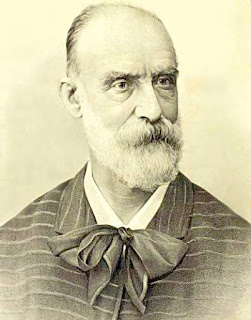Piedmontese artist famous for image of uprising in Milan
 |
| Verazzi's Episodio delle Cinque Giornate (Combattimento a Palazzo Litta) |
Something of a revolutionary in that he was an active supporter of the Risorgimento, it is supposed that he was in Milan in 1848 when citizens rose up against the ruling forces of the Austrian Empire, which controlled much of northern Italy.
The Cinque Giornate di Milano, in March of that year, comprised five days of street fighting that eventually resulted in the Austrian garrison being expelled from the city, marking the start of the First Italian War of Independence.
Verazzi’s painting, which is today on display at the Museum of the Risorgimento in the Castello Sforza in Milan, is entitled Episodio delle Cinque Giornate (Combattimento a Palazzo Litta), and shows three figures sheltering behind a barricade while another aims a rifle over the barricade, presumably in the direction of Austrian troops.
Born into a family of humble origins, Verazzi studied at the Brera Academy in Milan from 1833 to 1842 under the guidance of the Venetian painter Francesco Hayez. He participated in numerous art exhibitions in Milan and Turin.
In 1851 he won the prestigious Canonica Prize with The Parable of the Samaritan and in 1854 the Mylius Prize with his portrait of Raphael, which was presented to Pope Julius II.
 |
| Verazzi's Portrait of a Gentleman and Girls, in the National Museum of Fine Arts in Buenos Aires |
Although he had no shortage of work in Lombardy and Piedmont - his paintings can be found in many churches across the two regions - Verazzi took the bold decision in 1856 to move to South America.
Settling first in Buenos Aires, he became known for his historical and allegorical compositions, and for portraits, as well as the decorations at the Teatro Colón.
In Buenos Aires an intense rivalry developed between him and another Italian painter, Ignazio Manzoni, while he also had a dispute with General Justo José de Urquiza, an influential politician and military leader, which led him to move on to Montevideo in Uruguay, where he became a sought-after portraitist and decorated the frescoes of the Rotonda of the city cemetery.
Between Argentina, Uruguay and Brazil, he spent 12 fruitful years of his artistic career in South America, where he became one of the most appreciated and well-known painters.
He returned to Italy in 1868 but decided not to reopen his former studio in Milan in favour of taking up residence again in Caprezzo, although he ultimately decided that the wealth he had accumulated in South America deserved something grander.
Eventually, he took a fancy to the small town of Lesa, on the shores of Lake Maggiore and a favourite of the novelist Alessandro Manzoni.
He bought a extensive property in the hamlet of Villa Lesa, where he spent the last 16 years of his life, 1870 to 1886, and where his son Serafino, who also became a noted painter, was born in 1875.
 |
| The town of Lesa on the shores of Lake Maggiore, which was once the home of novelist Alessandro Manzoni |
Lesa is a pretty town on the shores of Lake Maggiore, halfway between Stresa and Arona, known for its calm atmosphere and beautiful views. The town and surrounding area is notable for its many extravagant villas and palaces, with gardens and distinctive architecture, a legacy of its one-time popularity with noble families. It remains a sought-after area for the wealthy, such as the businessman and former prime minister Silvio Berlusconi, who owns the Villa Campari, built by Gaspare Campari, inventor of the famous aperitif liqueur. On the lakeshore are the ruins of a castle that once guarded the town.
 |
| The Cascata del Toce waterfall is one of the attractions of the province of Verbano-Cusio-Ossola in Piedmont |
Caprezzo is part of the province of Verbano-Cusio-Ossola, an area of unspoiled nature that encompasses many beautiful valleys such as Val d’Ossola, through which flows the Toce River and the dramatic Cascata del Toce waterfall. The area includes the picturesque Lake Mergozzo, the northern bank of Lake Orta and the town of Omegna, which in the early part of the 20th century was famous for the production of small domestic appliances, including the first coffee makers and pressure cookers. The province includes the western bank of Lake Maggiore that hosts renowned resorts of Cannobio, Cannero Riviera, Verbania, Baveno and Stresa, as well as the Borromean Islands, lying in the middle of Lake Maggiore, including the Baroque palace and gardens of Isola Bella.
More reading:
What happened in the Five Days of Milan
Why Alessandro Manzoni is considered to have written the greatest novel in Italian history
Garibaldi and the Expedition of the Thousand
Also on this day:
Befana - the Italian tradition on January 6
1907: Educationalist Maria Montessori opens her first school
1938: The birth of Italy's biggest-selling recording artist Adriano Celentano
Home





